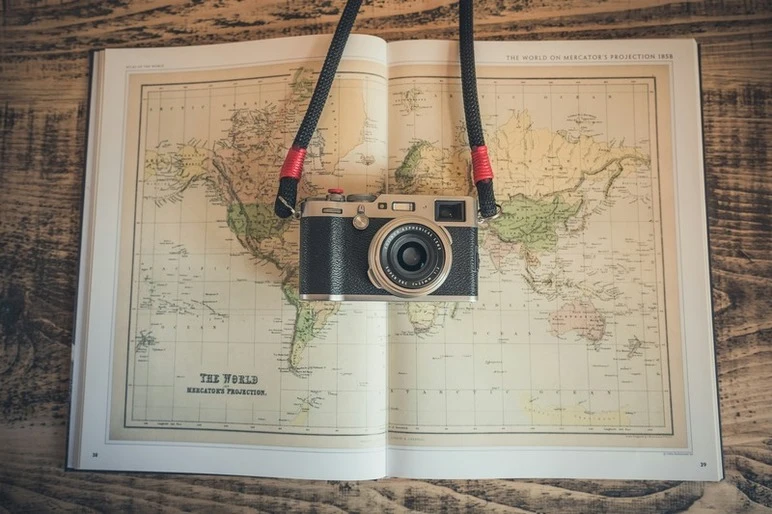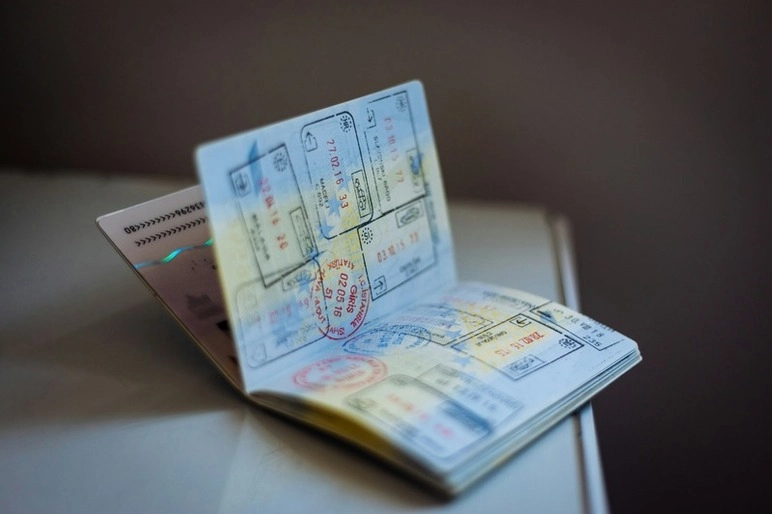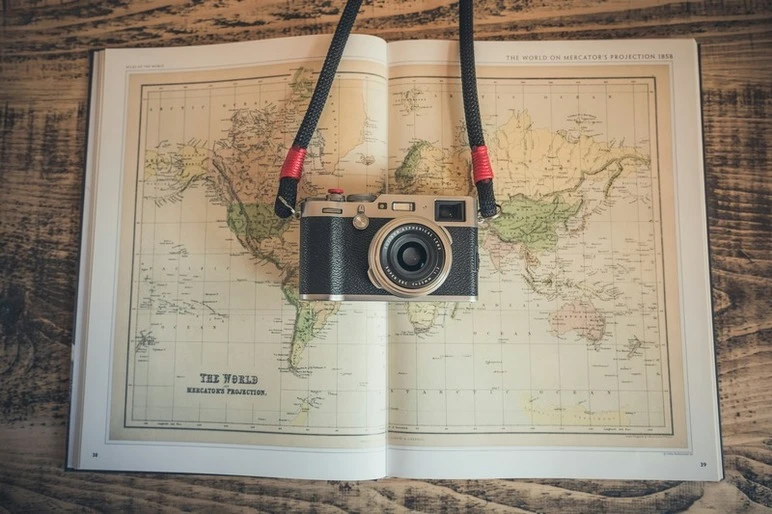
Planning a trip overseas requires a bit of preparation, and one key thing to sort out is your travel documents - ie, your visa and passport.
Like most citizens of the world, Indonesian citizens generally need a visa to travel abroad unless they are travelling to a country with a visa exemption agreement with Indonesia. The specific visa requirements depend on the destination country, the purpose of the visit (tourism, business, study, etc.), and the duration of stay.
Visas… truly are excruciating for Indonesian citizens at times. The paperwork, the requirements, and most of all, the patience. If only more countries beep the green light for Indonesians to conveniently enter a country. Good news travel bugs holding Indonesian passports can rejoice - we have some enticing news for you! The Indonesian government has declared that more and more countries are offering visa-free access. Although the list isn’t as extensive as neighbouring countries, it’s still an improvement.
Below is a general overview of the visa requirements for Indonesians travelling to various regions overseas. But first, allow us to help you comprehend several aspects.
What is a visa?
Before you embark on your international escapade, you must have the correct visa, if that’s required. A visa is an official permit issued by a country that grants permission to its holder to enter, stay, or leave the country for a specific period and purpose. It serves as proof that the traveller has met the immigration requirements and is permitted to engage in activities such as tourism, business, study, or work.
Generally, visa applications are processed at the embassy or consulate of the destination country. The requirements and process may vary depending on the visa type and the country you're visiting.
Different types of visas exist; depending on the purpose of your trip, how long you’ll stay, and your nationality. Five of the most common types are:
Visitor Visa: For those wanting to visit a country for tourism, recreation, or to see family and friends.
Business Visa: For travellers heading to a country to attend conferences, meet clients, or explore business opportunities.
Student Visa: For individuals intending to study at a foreign institution.
Work Visa: For people planning to work in another country.
Transit Visa: For passing through a country on the way to another destination.
Therefore, it’s a good idea to know which countries you can visit without a visa to avoid the hassle and extra fees of applying for one. After all, visa applications usually come with additional costs!
What’s the difference between a visa and a passport?
As mentioned previously, you’ll need to check whether your passport is ready and still valid or not. Both a passport and a visa are essential documents for international travel, but they serve different purposes.
Passports are official documents issued by your home country as proof of your identity and nationality. Think of it as your "travel ID"- you need it to enter and exit countries. Whereas, visas are the “permission slips” from your destination country.
Another way to view the differences is this driving analogy: Your passport is like a driver’s license (SIM) - it identifies you as the driver and proves you’re allowed to "drive" internationally. Meanwhile, a visa is like your vehicle registration (STNK) - it gives you permission to enter a particular area and perform certain activities, like carrying passengers or delivering goods.
So, what are the Visa-Free countries?
Many countries around the world require tourists to have a visa to visit. However, there are also plenty of countries that offer a visa-free privilege to Indonesian passport holders, making travel a bit easier.
The E-visa, conversely, is simply a digitised visa. The "E" just means it's applied online rather than queuing at an embassy; thus, it's a proper, legally required visa. It replaces the traditional stamp and often requires more detailed documentation (like photos or itineraries) than an ETA, fulfilling all the standard requirements of visa issuance.
Indonesian passport holders can enter 78 countries without a visa for short visits, typically ranging from 30 to 90 days, depending on the country. Scroll down to check which countries made the list!
Albania
Angola
Armenia
Bahamas (eVisa)
Bahrain (eVisa)
Barbados
Belarus
Benin (eVisa)
Bermuda
Bosnia
Botswana (eVisa)
Brazil
Brunei Darussalam
Burkina Faso (eVisa)
Cambodia
Cameroon (eVisa)
Chile
Colombia
Cook Islands
Congo
Cuba (eVisa)
Dominica
Djibouti (eVisa)
Ecuador
Equatorial Guinea (eVisa)
Fiji
Gabon
Gambia
Georgia (eVisa)
Guinea (eVisa)
Guyana
Haiti
Herzegovina
Hong Kong
India (eVisa)
Iran
Japan (with E-passports)
Kazakhstan
Kenya
Kiribati
Laos
Liberia (eVisa)
Macao
Mali
Mauritania (eVisa)
Micronesia
Moldova (eVisa)
Montserrat (eVisa)
Morocco
Myanmar
Namibia
Nigeria (eVisa)
Niue
Oman
Peru
Philippines
Russia (eVisa)
Rwanda
Saint Kitts and Nevis
Samoa
Serbia
Somalia (eVisa)
South Africa (eVisa)
St. Vincent & Grenadines
Suriname
Tajikistan
Thailand
Timor Leste
Togo (eVisa)
Tunisia
Turkey (eVisa)
Tuvalu
Uzbekistan
Vanuatu
Venezuela
Can I be granted a Visa on Arrival (VOA)?
Absolutely! Some countries allow you to get a Visa on Arrival (VoA) for tourism or business purposes. This means you can obtain your visa when you land at the airport or seaport. The VoA typically allows a stay of 14 to 30 days, but again, this varies by country.
There are 24 countries where you can benefit from VoA with an Indonesian passport:
Azerbaijan
Bangladesh
Bolivia
Burundi
Cape Verde
Comoros Islands
Ethiopia
Ghana
Guinea-Bissau
Jordan
Kyrgyzstan
Madagascar
Malawi
Maldives
Marshall Islands
Mauritius
Nepal
Nicaragua
Palau
Qatar
Sierra Leone
Tanzania
Togo
Zimbabwe
How about an Electronic Travel Authorisation (eTA)?
This digital age has come with its perks - including in the world of visas. Electronic Travel Authorisation (eTA) is your digital green light, not a visa. It's a mandatory, quick, and inexpensive online form confirming "visa-free" status. Think of it as an automated security clearance for citizens of countries that are already privileged to enter a destination visa-free. Its sole purpose is pre-flight screening, ensuring you aren't a security risk before you even board the plane.
So far, Indonesian passport holders can apply for an eTA to visit five countries:
Kenya
Mozambique
Pakistan
Seychelles
Sri Lanka
What if I want to visit Europe with a Schengen Visa?
You'll need a Schengen Visa, a special type of visa which allows you to travel freely between 26 European countries within the Schengen Area for short stays (up to 90 days within a 180-day period). Once you obtain it, you can visit multiple countries within the zone without the need for separate visas for each country; thus, travelling around is more convenient for tourists, business travellers, and students.

However, while you may travel freely within the Schengen Area with this visa type, you will still have to go through border control when entering the Schengen Area from a non-Schengen country. The first country you enter will be the one where you apply for your Schengen visa. Either way, if you plan to visit multiple countries but will spend equal time in each, apply at the embassy of the country you plan to enter first.
Below are the 26 Schengen Area countries where Indonesian citizens need one to visit:
Austria
Belgium
Czech Republic
Denmark
Estonia
Finland
France
Greece
Hungary
Iceland
Latvia
Liechtenstein
Lithuania
Luxembourg
Malta
Netherlands
Norway
Poland
Portugal
Slovakia
Slovenia
Spain
Sweden
Switzerland
Are there honourable visa mentions I need to know of?
Definitely. Several countries that didn’t make it in any of the lists above require separate visas. Even so, certain countries may have more stringent visa application processes, such as detailed background checks, interviews, and financial documentation.
Here are common destinations and their visa requirements:
United States: Indonesian citizens need to apply for a U.S. visa, typically a B1/B2 tourist visa. This process includes an interview at the U.S. embassy and biometric data collection.
Canada: Requires a visa (Temporary Resident Visa) for tourism, business, or study purposes. Similar to the U.S., the visa application process includes interviews and documentation proving the purpose of travel.
Australia: Needs a Visitor visa (subclass 600) for tourism.
New Zealand: Requires a visitor visa unless the traveller is eligible for a visa waiver; usually for short visits, for tourism, or business.
United Kingdom: Requires a standard visitor visa, which must be applied for in advance.
Japan: Indonesians must apply for a tourist visa, with requirements such as proof of financial means, a travel itinerary, and possibly an invitation letter.
South Korea: The short-term visit visa requires bank statements as well as flight and hotel bookings to name a few.
China: Indonesian citizens need a tourist visa (L visa) to visit.
And there you have it - your quick guide to visas and passports! Whether you’re ready to travel to a visa-free paradise or need to get your paperwork sorted, now you know what to look for.
Stay tuned as we break visas down in even more detail in our following posts. Safe travels, and enjoy exploring the world!




 Mirella Pandjaitan
Mirella Pandjaitan
 Dec 01, 2025
Dec 01, 2025